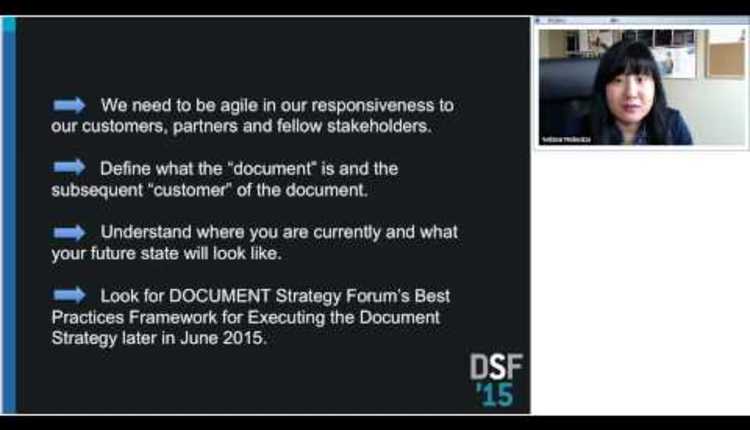Chief marketing officers face many challenges in today's business world—the advent of social media, the growth in use of smartphones and the vastness of global markets with different priorities, just to name a few. While it is generally accepted that people are happy about these technological advances, they do present a number of challenges for CMOs who are responsible for implementing global brand strategies. However, these challenges can be addressed by creating a well-thought-out and well-executed content management strategy (CMS).
On the surface, it may seem as though CMS technology is just another enterprise software term that means many things to many people. On the surface, a good CMS can help save time and money, improve employee productivity and ensure that materials are used as widely and effectively as possible. Yet, that is just scratching the surface. A well-laid out CMS is designed to support the company's global brand strategy, which includes an understanding of methods, processes, people and technology to streamline operations and to achieve the CMO's overall goals. When implementing a new CMS, chief marketing officers need to think about the technology from a holistic point of view with an eye towards achieving continuous improvements in global marketing efforts.
IN THE past few years, we've seen an explosion of new technologies that have fundamentally changed the way most of the world communicates. For instance, would there have been an Arab Spring in 2011 if Egypt's or Libya's citizens did not have the use of Twitter to communicate with the outside world? I highly doubt it.
Likewise social media technologies, such as Facebook and Twitter, have dramatically changed the way marketers do their jobs. No longer are successful marketing campaigns designed to serve as a one-to-many function. Instead, successful marketing is now based on more personal, one-to-one scenarios. This is a key concept that marketing leaders must understand when they deploy and structure new CMS technology, and this is why content management technology is so critical to building that personal one-to-one connection.
AT FIRST, it is important for the CMO to focus on larger, company-wide strategic issues. However, the next step, which is more tactical in nature, is just as important if success is to be achieved. In the past, the one-to-many marketing approach worked by simply blanketing a customer segment with corporate messaging and other supporting activities. Such channels as advertising and customer loyalty programs could be somewhat generic and still get the point across. However, in today's world, it is very difficult to secure a specific customer experience through general marketing campaigns. Large organizations must be nimble and employees must be empowered to take what is provided centrally and tailor it to their specific regions.
For instance, many successful companies have shifted their emphasis from general marketing campaigns to more of a modular approach. Instead of launching entire marketing campaigns from headquarters, the content is designed such that it can be broken into pieces and used per the requirements for each region. For example, if the CEO does a lengthy interview on camera with a news network, why not make that content accessible across multiple areas, geographies or industry segments? The trade show group could take clips from the interview and use them as background in the company's booth or a portion of the interview could be transcribed into a contributed article and a blog post on the company's website.
For CMOs, the way to enhance the odds for success is to analyze and settle on the core issues in advance, outline a CMS that maps to these core issues via a modular approach and empower employees to use this type of modularized content to fit their region's specific needs. Following this strategy can help deliver the best possible customer experience.
WHEN LAYING out a CMS, it is important to take into account the company's governance policies with an understanding of how employees communicate and share information. Everyone remembers the days of storing all corporate data on servers, usually siloed by department. From an evolutionary standpoint, that made sense: store paper documents in file cabinets, and now shift to housing documents electronically on servers.
Yet, questions arise quickly that can cause concern. What if the creator of the document had left the company? Who decided access rights for materials? What are the naming rights and nomenclature for storing documents? From an administrative level, how are document approvals and workflow issues addressed?
These issues must be addressed as part of the overall CMS, which can be addressed by clearly outlining the company's governance policies. For example, the ability to control assets, both from a rights and permissions for access and sharing, and controlling the use for brand consistency, as well as ensuring compliance with any regulations.
For example, in the financial services sector, there are strict rules about truth in lending. In addition, there are new rules and emerging regulations addressing communications, especially in the social media arena. What are the rules of engagement with customers? What about sharing information to the general public? The ease of exchanging information via Twitter and LinkedIn is a real threat. Organizations need content management tools that make it easy for employees to access information, yet also need controls to enforce information sharing policies.
LET'S TAKE a look at a Nissan. As anyone who has purchased or leased a car knows, the paperwork involved can be time-consuming and annoying. Once the customer actually selects the car, then the real work starts. Applications, bank information, credit checks, faxing documents back and forth—we all know the story. The customer then gets to enjoy a cup of coffee with the sales representative and kill time as everything gets processed.
Nissan decided that something had to change in this outdated and cumbersome process. The company examined the entire purchase/lease process, determined all of the customer information that was needed, captured the content online at the dealership and had the customer sign only one document. In the end, Nissan's ability to automate and streamline the entire process using a CMS increased efficiency and created a much more positive customer experience. The result? One year later, Nissan had done twice as many leases with half the staff. This goes to show that if all of the content is organized efficiently from the start and follows a well-thought-out plan, the customer experience can be upgraded.
WHILE THERE is no silver bullet or magic formula to deploying a content management strategy, CMOs that adopt the ideas presented in this article put themselves in a much better position to improve the customer experience, protect their company and executives from inadvertently breaking governance and compliance rules and secure positive ROI by maximizing valuable marketing assets and increasing collaboration between employees, partners and customers.
JAMES LATHAM is the Chief Marketing Officer of OpenText, and he has more than 20 years of executive leadership and global marketing experience in both start-up and large public software companies. He can be reached at jlatham@opentext.com and you can read more about his thoughts on marketing and social media at his blog, the CMO Zone.














